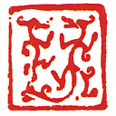Asian Art
First Paper: Looking
Your first paper for this course will be based on your analysis of a single Asian painting. Choose one painting from the following list of images, which you can see in detail when you download this PDF: LOOKING_PAPER_IMAGES.pdf (45 MB).
- Attributed to Govardhan (active c. 1600-1650). Shah Jahan on the Peacock Throne. Album leaf, opaque watercolor, gold, and ink on paper. Folio 37.3 x 25.2 cm. Portrait 16.5 x 13.9 cm. [India]
- Unknown, 18th century (Rajput Dynasty). Dancing Girls. Album leaf, ink and pigments on paper. 19 x 12 cm. [India]
- Ma Yuan (active c. 1190-1225). Viewing Plum Blossoms by Moonlight. Round fan mounted as a album leaf, ink and light color on silk. 25.1 x 26.7 cm. [China]
- Wu Zhen (1280-1354). Fisherman. Inscribed by the artist. Handscroll, ink on paper. 24.8 x 43.2 cm. [China]
- Lu Ji (active late 15th century). Mandarin Ducks and Hollyhocks. Hanging scroll, ink and color on silk. 172.7 x 99.1 cm. [China]
- Shitao (Zhu Ruoji, 1642-1707). Landscape Album for Elder Yü (third leaf). Album leaf, ink and color on paper. 24 x 28 cm. [China]
- Ogata Korin (1658-1716). Rough Waves. Two-panel folding screen, ink, color and gold on gilded paper. 146.6 x 165.4 cm. [Japan]
- Unknown, 13th century (Kamakura Period). Nichizo's Journey to Hell. From Illustrated Legends of the Kitano Tenjin Shrine. Set of five handscrolls, ink and color on paper, h. 28.8 cm. [Japan]
This is known as a "response" essay, which means that you do not need to do extensive research or background reading. Indeed, all of these paintings come from times and places not yet covered in the course. In short, you are to look at the painting and then describe and analyze its form based on what you see, a technique known as "formal analysis."
For guidance on how to do this, see:
- Christina Maranci, A Survival Guide for Art History Students (Pearson Prentice Hall, 2005), Chapter 3, "Putting Words to Images: Mastering the Response Essay," pp. 33–70. Download: Maranci_3.pdf.
The finished paper should be about 600-900 words long (roughly 2-3 pages), but it is due in two parts.
First Draft
Due in class Monday, February 25.
Write a careful description of the painting. This part should be about 300-600 words (roughly 1-2 pages). You will want to talk about the subject matter of the painting, and you should also use what we have learned about formal characteristics of art in this part of the paper. These potentially include the following (remember that the absence of certain characteristics is sometimes important too): media; composition; quality of color; quality of line; representation of space, mass, or volume on a two-dimensional surface; the perspective or vantage point of the viewer; and proportion or scale.
Second Draft
Due in class Monday, March 18.
Take the description you wrote for the first draft and revise it in order to include your analysis of the painter's artistic choices in regard to media, composition, color, line, space/mass/volume, vantage point, and proportion or scale. Artists make deliberate choices. Think about how the painting could have been different. Then consider what the artist's choices convey to the viewer.
After you have come up with ideas about why the artist painted this particular work in a certain way, use those ideas to develop a specific thesis around which to organize your writing, and put the thesis in the first paragraph. Your draft at this point should have grown by another 300-600 words, making it roughly 600-900 words or 2-3 pages altogether.
If you are unsure about how to format your paper, see:
- Sylvan Barnet, A Short Guide to Writing About Art (Pearson Prentice Hall, 2010), Chapter 13, "Manuscript Form," pp. 299–335. Download: Barnet_13.pdf.
If you cite a source, use either parenthetical references or footnotes. Make sure that you follow one of the documentation styles explained in Barnet's chapter.
On plagiarism:
Plagiarism is the use of someone else’s words or ideas without giving that person credit. This means that you need to cite your sources in your writing assignments. When quoting directly from a text—say, five words or more in succession—you need to put those words in quotation marks and include a parenthetical reference or footnote citing the source. When rewriting a passage from a text in your own words, you don't need the quotation marks but you do still need the parenthetical reference or footnote. If you don’t understand exactly what constitutes plagiarism, or how to use parenthetical references or footnotes, please ask me. I would prefer to explain what it is and how to avoid it before it happens rather than after.
NOTE: Much of the above (including the paragraph on plagiarism!) is derived from a syllabus written by Professor Lara Blanchard at Hobart and William Smith Colleges.
